#Study
Guides and Vocabulary Sets. An
Text
How to Study like Rory Gilmore


A guide on romanticising school, studying like Rory Gilmore, and effective study methods. <3
Create a schedule. Rory is well-known for her strict schedule and commitment to sticking to it. To study like Rory, you should first make a timetable outlining your study time, reading time, and free time. Include breaks in your schedule and follow it as strictly as possible! :)
Lots of reading. Rory is an avid reader who always carries a book with her. Pick books that interest you and make reading a daily habit. Reading will help you develop your vocabulary and critical thinking skills.
Take notes. Rory is well-known for her detailed notes and ability to retain information. Take notes in class and annotate your books. Make your notes more structured by using highlighters and different colours, and review them daily. (goodnotes and notion are great for digital note taking!)
Make use of flashcards. Rory memorises stuff through flashcards. Flashcards can be used for vocabulary terms, key concepts, and other relevant information. Use them to test yourself and review regularly.
Define your goals. Rory has a set goal, what are you working towards? Make a vision board, write down your goals, visualize. This will help you stay motivated and not loose focus!
Stay organised. Rory is well-organised, and her study space is always neat and tidy. Keep your study area nice and free from distractions. Use folders, binders, and other tools to keep your notes and supplies organised, and make sure your workspace is clean and clutter-free.
Seek help when needed. Rory is not afraid to ask for help when she needs it. Don't hesitate to ask for help from your teachers, tutors, or classmates if you need it. To enhance your learning, ask questions and seek out extra resources such as textbooks, youtube videos, and study guides.
Atmosphere. Don't forget to make the atmosphere cosy, light a candle, prepare yourself a cup of tea or coffee, and wear a comfy sweater. Create an environment in which you can stay focused for hours. <3
Studying like Rory Gilmore requires dedication, discipline, and a love for learning. By following these tips and strategies, you can create a study routine that works for you and helps you achieve your academic goals.
As always, Please feel free to add more suggestions or questions in the comments!
✩‧₊*:・love ya ・:*₊‧✩
#aesthetic#coquette#dream girl#girl blogger#it girl#pink blog#that girl#malusokay#pinterest#rory gilmore#gilmore girls#study aesthetic#study blog#romantizing school#coquettecore#it girl energy#girl blogging
3K notes
·
View notes
Text
Fair Winds and Following Seas
- Part 1 - Part 2

Pairing: Buggy x afab/female reader
Genre: smut with a pinch of fluff
Word count: 603
Warnings/Tags: dry humping, marking, fingering, unprotected sex, cock warming, Buggy being horny AF.
Summary: Buggy was a pirate, you, just a regular person living in a seaside town. From the moment you met, lust linked your paths, and both agreed to spend a couple of hours together whenever he was in town. Little you knew that feelings would find their way into your almost perfect deal.
A/N: This is the first part of a short Buggy x Female Reader fanfic I'm currently working on. Enjoy 😉
BTW, welcome new citizens of the Buggy Nation! 🤡
Read it on AO3
----------- >> * << -------------
And there you were again, half naked on Buggy's bed, with his mouth assaulting your neck, claiming you, marking your skin like he did every time you met. His clothed erection rubbing against your clit was his way of showing you how much he needed you, how crazy you made him.
"Fuck," he whispered once, twice, and once more until he couldn't resist the urge to kiss you again, hungrily, deeply. His hands slid under your shirt, setting your skin ablaze as his mouth devoured your soft moans. Buggy was always like this: explosive and intense. A fire that left your body aching but always wanting more.
"Oh, Buggy!" your voice suddenly raised in pitch when he parted your panties to the side and slid two fingers inside your dripping pussy. The welcomed intrusion made your back arch and your muscles clench. Your nails dug into his shoulders when he added a third digit, and your breath caught in your throat.
"What is it, Y/N?" The pirate groaned, guiding your hand to his cock. "Is this what you need?" He teased, curling his fingers inside you, taking delight at the desperate noises you made.
A simple nod and a faint whimper were the only answers Buggy needed. Soon, the remaining clothes you had on were nothing but shreds of fabric lying on the floor. Your calves rested on Buggy's shoulders while he entered you slowly, letting out a low grunt as your warmth engulfed him.
"Fuck," the pirate never ceased to repeat as he smacked his hips against yours. Drunk with lust, he let your legs fall around his waist and leaned down to whisper in your ear how good you felt, how he wanted you to take every inch and every drop of him.
His tempo increased gradually along with the volume of your moans until you were screaming his name. One of your legs hooked around his waist, the other on his shoulder, a perfect angle to take him deeper.
"Oh, Buggy," were the only words in your vocabulary as the pounding continued, bringing you closer to the edge.
The pirate's eyes refused to close, even when your walls fluttered and clutched around him and your body spasmed after an intense orgasm. He didn't want to miss a second of your reaction to pleasure, your tits bouncing with every thrust of his hips, and your swollen lips calling his name over and over.
"Fuck, y/n," he grunted, with a last powerful thrust, spilling himself inside you. "Fuck..." he huffed once more, collapsing on top of you to rest his head in the crook of your neck.
It was then when you noticed it, or rather when you confirmed it. The man still buried between your legs was no longer that pirate you met several months ago and had been fucking ever since. Something had changed between you; his arms holding you close and your hands stroking his back were enough evidence of it. A need stronger than sheer lust had infiltrated your otherwise perfect no-attachment deal.
"Stay the night?" Buggy broke the silence a few minutes later, failing to hide the loneliness in his voice. His icy blue eyes searched yours, studying your reaction with a hint of fear that you didn't quite catch.
"Of course," you replied, giving his nose a soft peck.
Sliding out of you, the pirate rolled on his back, bringing you to rest your head on his chest. "Perfect," he whispered, closing his eyes. Buggy was never like this: affectionate and soft. It was a side of him you hoped to see more often.
More a/n: Hearing Buggy say "I will find the One Piece, and then everyone will know my name… And they'll love me," inspired me to write this. That line, in particular, broke my heart and made me realize how lonely and emotionally starved Buggy really is.
----------- >> * << -------------
#in this house we don't ignore the nose#buggy x reader#buggy the clown#one piece buggy#buggy d clown#buggy the genius jester#op buggy#opla buggy#captain buggy#jeff ward#one piece fanfic#one piece live action#opla#op fanfic#no beta read#buggy x you#buggy x y/n
636 notes
·
View notes
Note
Can you make a how to live like song jia for a day ?
How to live like song jia ౨ৎ ⋆。˚ the perfect routine to boost your self-esteem



This is a guide on daily routines inspired by Song Jia! These routines are perfect for people who want to slowly build unbreakable confidence, like freezia!
content list (routines):
morning
study
workout
shower + self care
night
(_ _ ) . . z Z⋆ ˚。⋆୨୧˚୨ :★: ୧ ∗ ˖࣪ ໒꒱ ˚₊·

✸ ꒰ morning routine ꒱⋆ ࣪.* ࣪.⋆
🤍 Jia starts her mornings drinking a cup of water or coffee on an empty stomach, this can help to boost your metabolism and detox your body. I would recommend to drink water rather than coffee, since this could have some negative side effects.
Next step is to say some affirmations in front of the mirror, saying affirmations like 'I look so pretty today' or 'my skin looks so healthy' or simply being kinder to ourselves can ease stress, allow us to face difficulty more courageously, and feel more content and confident!
Now it's time for skincare, Jia emphasizes on having a healthy skincare, for this you will need to create a routine based on your skin type (dry, oily, combination, sensitive, normal or acne prone) and your skin concerns (black heads, bumps, irritation, scars, etc.), please make sure to consult a professional before using anything on your face! Now Jia usually cleanses her face with a foam cleanser and then use toner, a moisturizing ampule, moisturizer and sunscreen! She makes sure to apply the products on her neck too.
After skincare it's time to get dressed, while we wait for the products to absorb! Jia is a really fashionable girl, make sure to have fun with the textures, shapes and color combinations to make the best outfit and boost it using accessories like hats or sunglasses, don't forget to get a matching bag and shoes too!
Time for makeup! Jia's daily makeup consist of BB cream, mascara, eyebrow pencil and lipstick, but if she's shooting something she will add contour, blush, eyeshadow, eyeliner and highlighter to the routine!

✸ ꒰ study routine ꒱⋆ ࣪.* ࣪.⋆
🎀 When Jia goes to her Chinese classes she pays attention and does activities in her book, she also practices writing random things like her name! She memorizes vocabulary and practice a little with her friends in the same class.

✸ ꒰ workout routine ꒱⋆ ࣪.* ࣪.⋆
🦢 Jia recommends to work out at least for 20 minutes per day! She usually does simple waist or legs exercises while standing up looking at her phone or watching TV.
Also she goes to Pilates classes so you can try to do a 20 minute Pilates workout video like this one.

✸ ꒰ shower and self care routine ꒱⋆ ࣪.* ࣪.⋆
🩰 To boost your self-esteem Jia says that we have to at least take 2 days of the week (Saturday and Sunday) on really taking care and spend time with ourselves.
First detangle your hair using a hairbrush, then hop on the shower and use shampoo, conditioner and a hair mask to treat your hair. Then wash your body using a shower gel and a body scrub. Jia uses a soothing gel, thermal water and a body lotion to moisturize her body after shower, she massages the products on her skin to relax her muscles. After 30 minutes, she dries her hair with cold air. After, you can trim your split ends or take care of your nails if necessary.
As a part of self-care, do chores like doing laundry or washing the dishes so you can start relaxing on a tidy place (you can also light an scented candle). Also, Jia takes her vitamins for her hair and overall health.
Now it's time to enjoy our hobbies! Having hobbies help us with both our physical and mental health, plus having our alone time makes us more comfortable with ourselves and help with self -discovery, Jia haves a good set of hobbies that she spends most of her time doing like oil painting, doing DIYs, watching dramas like insider, taking care of her dogs, cooking and baking, playing video games and golf!

✸ ꒰ night routine ꒱⋆ ࣪.* ࣪.⋆
🌷 Finally, Jia spends her night taking care of her skin! First she washes her hands, the uses a cleansing oil or milk, then she uses makeup remover on her eyes if the cleanser didn't take off her eyeliner for example, then she uses a foam cleanser and toner to finish cleanse her skin. After she uses a hydrating mist and ampule, a dermatologic treatment, sheet mask, lip balm and moisturizer (remember to apply it on the neck too!) after she uses a gua sha to massage her face.
as a part of skincare, make sure to sleep at least 8 hours everyday and drink enough water to wake up with perfect skin!

(_ _ ) . . z Z⋆ ˚。⋆୨୧˚୨ :★: ୧ ∗ ˖࣪ ໒꒱ ˚₊·
Heyyy ty for reading!! This is my first request everrrr I'm so excited <3 🥹🥹, sorry for being inactive, school has been killing me but I'm finally on my summer break! Also sorry this took me a lot of time to do >.< i had to do a marathon of Jia's videos to make this
Hehe i think that's all stay tuned ໒꒰ྀི´• ˕ •` ꒱ྀིა
toodlez!!!!!!
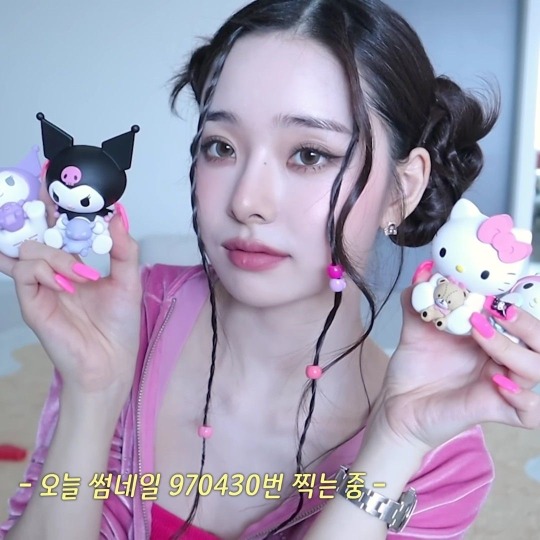
#jia#song jia#freezia#wonyoungism#song jia motivation#morning routine#study routine#workout routine#shower routine#self care routine#night routine#aesthetic#coquette#dream girl#it girl#pink blog#that girl#pinterest#pink pilates princess#glow up#beautytips#girly#pinterest girl#becoming that girl#pink princess#productivity#motivation#inspo#self care#dream life
184 notes
·
View notes
Text
Self / Independent Learner's Guide to Language Learning From Zero
-a mini study plan
I used this for Spanish, French and Italian, it is my favourite way of starting to learn. It won't teach you the langauge but if this is your first time, if you feel confused and don't know where to begin, this is for you!
-this is kinda romance langauge based but might give you ideas if you are learning from a different family too
-this is very notebook / writing based since i prefer learning that way
Step 1: Preperation
First of all, ask yourself "do i already have some amount of immersion in this langauge?" As humans, we learn from immersion a lot. Songs, but especially visual media is incredibly heplful. I never studied japanese but after watching a few animes i picked up 5-10 random words. Passive vocabulary, being familiar to most common words will be your biggest friend. If the answer is no, before start studying ANYTHING do some immersion.
e.g. I watched dix pour cent for French and learned arrêt which means stop because characters were shouting to each other all the time.
After making sure you have some immersion or if you already have some, PREPARE YOUR RESOURCES. Make a file in your computer, reblog tumblr posts, save links. Search for pdfs in google. (x language a1 pdf / x langauge a1 grammar book / x language a1 reading) Free PDF's and and useful websites. The more the merrier. Why? Because when you actually start learning you will slowly realise them half of them are not actually useful, too advance, too simple, not in your preffered style etc. You will en up using same handful amount of resources again and again but before that, you have to TRY EVERYTHING. You are unique and so will be your learning process.
Google x language A1 curriculum. (you can try adding "pdf" at the end of sentence as well) It "probably/ hopefully" exists. If you can't find that way, learn which offical exam is necessary (e.g. for French it's DELF/DALF, in english there is IELTS and so many more) If you are lucky, you can find a langauge teaching enstitute's curriculum and you can find in what order they teach things. This was very helpful for me because sometimes you don't know what to study next, or just want to visualise what do you need to learn, it is helpful. I printed one out and paste it to the back cover of my notebook. You won't need this one YET. I'll explain in a second. Keep reading.
Get a notebook. I don't prefer books while learning from zero because it will be filled with vocabulary you don't know. My pereference is no squares no lines empty ass notebook and colorful pens. I'm a person of shitty doodles. I love to draw and visualise things. It really helps my brain. In A1, your knowledge is absouletly zero and your brain is about the explode with realising GREAT MASS of knowledge you need to learn in order to be "fluent" . So keep things away from being "too much" if you want to avoid a burnout.
Set a timer. If you want to avoid burnout, the secret is always quit when you feel like you can go another round happily. Quit when you are dopamine high. If you study too much, next day you'll wake up tired, want to rest etc. and make it harder for you to create a habit. I did this mistake with French by studying 4-5 hours everyday for around 30 days. I completed my challenge, completly quit and then didn't come back for MONTHS.
You will be re-studying A LOT. Language learning is repetition. You will start by studying "the A1 curriculum". But, because this is your first time your focus will be on the vocabulary and general comprehension. You are trying to re-wire your brain, and learn a different way of thinking and living. It's not easy. It will take time. It will be painful at times. But it is 100% worth it.
After you finished studying your curriculum, you'll take a short break and then study the curriculum AGAIN. For a second time. Because you already know the basics, this time you will be able to focus more on the little things you weren't able to comprehend the last time. e.g. articles or whatever little frustaring thing your langauge has. Also focus more on basic prononciation and especially reading aloud. Find a realistic text-to-reader. Copy-paste a text. Listen and repeat.
Get a new Youtube and Instagram account dedicated to langauge study. How many good resources exists and where they are is really depens on which langauge you are learning. For english, youtube is better. For French, instagram is better. You have to see for yourself. If you get a seperate account for your langauge algorith will learn faster and you won't be distracted by other stuff. Short form engaging videos are the best for absolute beginners. Re-watch things and try to repeat them out loud. It's called shadowing and is your future best friend.
If you want to learn how to speak, you first need to how to write. If you can't write sentences without looking at google translate (or reverso) you won't be able to make up sentences in your head. If you want to learn how to write, your first need to learn how to read. You need to start in this order but also don't be perfectionist. Do it even if you do it wrong. They will be fixed eventually and won't stick. Record yourself speaking even if the text you are reading is 90% google translated. Why? Beacuse speaking will enhance your vocabulary in a way no other thing can and that's the core of reading. So this isn't a linear thing. It's actually a circle!
Step Two!
Ok, Sadie, i got my notebooks and read through all the warnings where do i start?
*First page:
[] means written is target langauge
[x notebook] x= your target langauge
Add something cute and make you feel happy to open up the notebook. It can a drawing, a picture, anything. First page is your entrance to your new home. Make it welcoming.
*[My name is X. I am Y years old. I live in Z.]
*Greetings. Main articles if there are any. Yes, no, please, thank you.
*What is your name, what do you do for living, how are you, where are you from, how old are you, how many langauges do you speak, numbers from 0-100. If there are multiple way of saying these things and probably there are, just write one. You will eventually learn others. Baby steps.
*write a basic ass text of two people having a conversation asking and answering these questions.
*the alphabet and how to pronounce the letters. basic letter combinations that change into a different sound. a youtube video about this 100% exists.
*personal pronouns and if there is a "am/is/are" verb the conjugation of it. (in spanish there is two unfortunately)
*artciles and basic noun endings. a couple exemples of nouns in x form but takes y article.
*first 5 most common verbs. learn the conjugation, try writing basic ass sentences. (e.g. to come, go, have, speak)
*three more verbs (e.g. to eat, can, to want)
*take some time to fully comprehend. check your curriculum list to look and see if you want to add anything. e.g.for spanish that can be ser vs estar, for spanish is can be "how to ask questions in french" becaue it's way harder compared to other langauges.
*take some break from grammar and learn some vocab maybe. it can be colors, or feelings. (i am sad, i am hungry etc.)
*start studying most common verbs. usually a form of categorization exists. usually it's verb ending. (unless it's a language like turkish where every verb either ends with -mek or -mak lol.) Start with 10- 15 most common verbs. You will also be learning some vocabulary by default. (try to stick to regular verbs if you can, if not that's fine)
(Do not learn any verbs you won't be able to use immediately.)
*Learn basic adjectives and how they work so you can form more detailed sentences.
*After comprehending how to form basic positive negative sentences and some verbs, congratulate yourself, because you deserve it!
*Learn how tell time. "What time is it? It's x'o clock."
*learn clothing and how to simply describe physical look e.g. hair color, eye color, beard, glasses...
*learn the verbs of daily routine. be able to write a generic ass "i wake up, i do breakfast, i eat lunch at school, i sleep" sort of text.
*demonstratives. this that. these. those. you can add some vocabulary you like. this is a cat. this is a tree. you can add placement adjectives now or later. (the cat is under the sofa. the bird is on the table etc.)
*Now you know a lot of things! Take some time and focus a bit more on the vocab, let your brain process things, do some passive immersion. avoid a burnout at all costs.
*learn how to say "there is" (if you want more vocab transportation and city centre themes can be included.)
*learn how to talk about your hobbies.
This is the generic A1 curriuculum. You are able to understand basic things, you have a generic comprehension. That's all it takes to be considered A1. If you want to pass it though, what you need is a good grammar source. For French and Spanish Kwiziq was very useful. I couldn't find a good online grammar resource for Italian yet. (please ask more experienced langblrs for recs.) Slowly learn more vocab (since A1 is more vocab based. If you hate Anki and Quizlet stuff check Linguno. Actually check Linguno anyway it's a banger and i'm gonna die on that hill.)
If you don't have have native friend to ask questiones and you don't have any ethical concerns ChatGPT can be useful. I'm using it for French for months. Why are we using this particle here, why this and not that, can you give me some example sentences.... you can play guess the animal, ask for writing prompts and then make ChatGpt find and explain your mistakes to you. It's very handy.
*Don't be scared to share about your journey on Tumblr and most importantly ENJOY!
309 notes
·
View notes
Text
i was looking for a way to learn russian not because i have any reason to or expectation of ever becoming fluent but because i have insomnia and need challenges to occupy myself with at night without those things having anything to do with anything i try during the day.
ok now i feel like an annoying cooking blog giving an essentially unrelated story before the recipe, but this motivation probably determines what i look for in language learning resources: no organisation necessary on my part. accessible online. capable of keeping me entertained while half-asleep.
found this!
"The "textbook" for Ме́жду на́ми is this website. It is a free resource that requires no special password or registration. It provides the story line, vocabulary, grammatical explanations and cultural context that will guide your study of Russian. You will also use a set of printed workbooks called Ра́бота в аудито́рии (Classroom Activities) and Дома́шние зада́ния (Homework Assignments).
The program is organized into nine уроки (units). Each one starts with a list of goals so that you know what you will be learning to do in Russian. You should plan on checking yourself regularly against these goals as you work through the material. They will help you keep track of what you know well, and the areas in which you might need some additional work. Each unit divided into three ча́сти (parts), with each часть (part) sharing common thematic and grammatical content. These parts are divided into episodes that advance the ongoing story line and provide new vocabulary, grammar and cultural information. Each episode begins with a текст (text), which you should plan to read multiple times. Listening to the audio, looking at the illustrations, and checking the mouse-over glosses for words and phrases that may be hard to figure out from context will aid your understanding of the text. If you cannot recall the meaning of a word you have seen before, you can look it up by checking the Слова́рь (Dictionary).
After reading and listening to the text several times, you should move onto the Вы всё по́няли (Did You Get All of Тhat?) section, which provides comprehension questions with automatic feedback to help you to check your understanding of the text and to learn new vocabulary. These activities are crucial preparation for the in-class work, which is designed to help you use this new vocabulary and to examine new grammatical constructions.
As you work with the classroom activities, you will read and re-read the Немно́го о языке́ (A Bit About Language) section, which contains information about Russian grammar and usage encountered in the episode. Be sure to make use of the activities with automatic feedback to see if you have understood the new concepts being presented.
68 notes
·
View notes
Text
Like with any language, there are several resources and tools for those looking to learn Mandarin Chinese. I know because I’ve been there. And in this guide, I’ll set out some of the main things to know when starting your language learning journey and key resources to master Chinese grammar and vocabulary
The amazing Jaenelle, who did her thesis in Mandarin Chinese and studied in China, wrote up this post for beginners.
#mandarin#langblr#language#languageblr#languages#translation#language learning#lingblr#mandarin chinese#chinese
178 notes
·
View notes
Text
ᴡʀɪᴛɪɴɢ ʀᴇꜱᴏᴜʀᴄᴇꜱ - ʟɪɴᴋꜱ
word count + tracking progress - nanowrimo
-> "Writing a novel alone can be difficult, even for seasoned writers. NaNoWriMo helps you track your progress, set milestones, connect with other writers in a vast community, and participate in events that are designed to make sure you finish your novel. Oh, and best of all, it’s free!"
every name on this planet - fantasy name generators
-> "There are over 1400 name generators, as well as many description generators, guides and various tools you might find helpful. "
simplify your writing - Hemingway editor
-> The app highlights complex sentences and offers helpful suggestions (sorry, Grammarly).
understanding words - vocabulary
-> "Whether you’re looking up a specific word or just browsing, you’ll find a universe of friendly explanations and fun activities designed to educate and entertain."
focus / pomodoro timer - pomofocus
-> "The Pomodoro Technique is a time management method developed by Francesco Cirillo in the late 1980s. It uses a kitchen timer to break work into intervals, typically 25 minutes in length, separated by short breaks."
focus writing - zenpen
-> "A minimalist writing zone, where you can block out all distractions and get to what's important. The writing!"
writing prompts / feedback / contest - reedsy prompts
-> "Join (probably?) the world's largest writing contest. Flex those creative muscles with weekly writing prompts."
write 3 pages / day - 750 words
-> Learn to habit-write, and get results + information on your writing consistency, speed, distractions, etc. The goal is 750 words—three pages.
black market information - havocscope
-> "Havocscope provides information and threat intelligence on the global black market. Due to the ability of transnational threats to cause financial losses and social harms, key statistics and data about the illegal economy is provided to help mitigate this risk. The information about the black market has been collected from government agencies, academic studies, media reports, and reported data from our sources."
baby character names - nameberry
-> "Baby names by the experts at Nameberry, including popular names and unique names, baby girl names and baby boy names and gender neutral names too. We've got baby name lists, news and a revolutionary name generator. It's more than a name, it's an identity."
#writing resources#writerblr#lyralit#creative writing#writers#writers block#writing reference#writing references#wip
616 notes
·
View notes
Note
Do you have any tips/resources on writing smut? I've never really written it, but I need to include a little in a fic I'm writing rn and yours is very good.
Anon! Thank you so much, this is Extremely flattering ❤️ Honestly, my #1 rule to Writing Smut is that actually anything can be hot if a scene is written to be arousing. It's all about the setup.
Some things that work for me:
EMOTIONS. ime, smut scenes should cause some level of emotional response in the reader. It can be the POV character experiencing strong feelings and that coming through in the narration; it can be a taboo or hard kink that’s enough to guarantee some kind of reaction; it can be an emotionally cathartic scene or character study through sex. It doesn’t have to be a lot! But there has to be Something that makes the reader invested, a takeaway that you couldn’t get from a purely objective description or looking at a picture.
FLOW. You’re either trying to make the reader horny and/or you’re trying to make them interested in what the characters are doing and feeling. Lean into that when crafting a scene! I find that varying the length of sentences in a paragraph helps (building up to a crescendo) and so does the deliberate use of terminology to set up a specific mood (more descriptive euphemisms vs. crude slang as the POV gets more overwhelmed, alternating lush prose and crass descriptors to create some contrast.)
CHARACTER-APPROPIATE VERBIAGE. This is a big one! There are NO forbidden smut words, actually. I have read super hot smut that hinged on the repeated use of some deeply unsexy terms. It’s ALL about the narrative voice. Try to construct a scene that’s immersive, with a narrative voice that suits the characters and the story, and the type of vocabulary that suits the POV and setting. Ime, anything and everything can be sexy if the mood is right. Yes, even the word “penis.” YES even funky euphemisms.
PURPOSE AND PACING. Why is the scene there? Try to strike a good balance between descriptions, feelings, and words. If the characters stop mid-sex to talk, it’d be harder to get back into a sexy mood (why I’ve been stuck on this one WIP for months. RIP) On the other hand, sometimes it’s fine to skip moments / descriptions, or even end the scene mid-sex.
(This is especially important in chaptered fics, in my experience. Sometimes there’s a long elaborate build-up to a get together and then all the emotions fizzle out during The Sex Chapter, or a plot-heavy story, and then the story slows down to fit in 3 orgasms per character. It’s fine, often better, to just stick to one orgasm, make it extra hot, and skim over the others)
WRITE DRUNK EDIT SOBER or any variant thereof. Write in comic sans and edit in times new roman. Write horny edits in public. It’s really easy to overthink smut and in my opinion, it Really helps to fully commit to a shitty first draft—no quibbling over word choices or positions; just don’t look at the screen and bang out 500 words. (Ah-ah, bang.) Write on your phone if you want! Put it away for a while then edit.
SMUT IS NOT SEX ED. Realism matters less than feelings do. I don't need to know every detail unless it's relevant to the development of the scene. Unless it’s something glaring like someone is suddenly naked or used soap as lube, no one is going to nitpick how realistic it is to hold X position for Y minutes or how many spankings a human being can endure. The scene works narratively >>> the scene can be recreated by random non-athletes having sex. It’s fic! If someone is taking it as a Guide To Sex that’s not on you.
Other resources: This is a good essay directly from 2005 era livejournal. Some posts about vocabulary: on kissing, smut thesaurus, more words! (use with caution, don't take anything as a hard rule etc.)
Also I just think I'm funny:

GOOD LUCK WRITING IT LMK HOW IT GOES
119 notes
·
View notes
Note
hi!! where did you learn Japanese? 🥺 ive only just started so im trying to improve as i go. any tips?
hello! so, i self-studied for about 8 months before i started studying it at university!
my tips are!
-learn hiragana and katakana make sure they’re solid! probably take about 3 weeks! but you might’ve already learnt them.
-increase input of the language! so watch and listen to more japanese, music etc. when i first started studying i would play this city pop playlist and this one, so now whenever i play it i can focus on japanese and study cos my brain is used to hearing it when studying it if that makes sense!
-i used memrise for a few months but Duolingo is good too, just to slowly implement the language before learning any grammar! in this time i suggest starting to learn some light vocab, like Quizlet>> N5 japanese vocabulary.
- to start learning grammar i started with the app, tae kim’s guide to japanese and then some minna no nigongo books, i also used an italki tutor for a few months (quite cheap language teacher online over video call).
- my other tips are make sheets of basic things like hello, how are you, the weather is nice etc, i feel like it really helps you get used to the basic structure of sentences and i felt like memrise was really good at this and that’s why i suggest using it over Duolingo because it teaches you things like “he likes books etc.” “cherry blossoms are pretty etc etc.”
- then when you’re feeling good with the basics start with some kanji! i was lucky enough to study japanese in lockdown where I could study 2-4 hours a day.
i will now show you all the resources i used like apps and books!
-best app for learning katakana and kanji!
-the Japanese app is great and I still use it now! so, i input kanji I’ve learnt onto a list and you can study it in flash cards! i even have a list for words and phrases i hear in anime and dramas and films, and interesting dictionary sentence examples.
-the grammar guide i used loosely at first and the vocab stack i used!
- the yellow textbook is the most important bc it has the grammar summarised
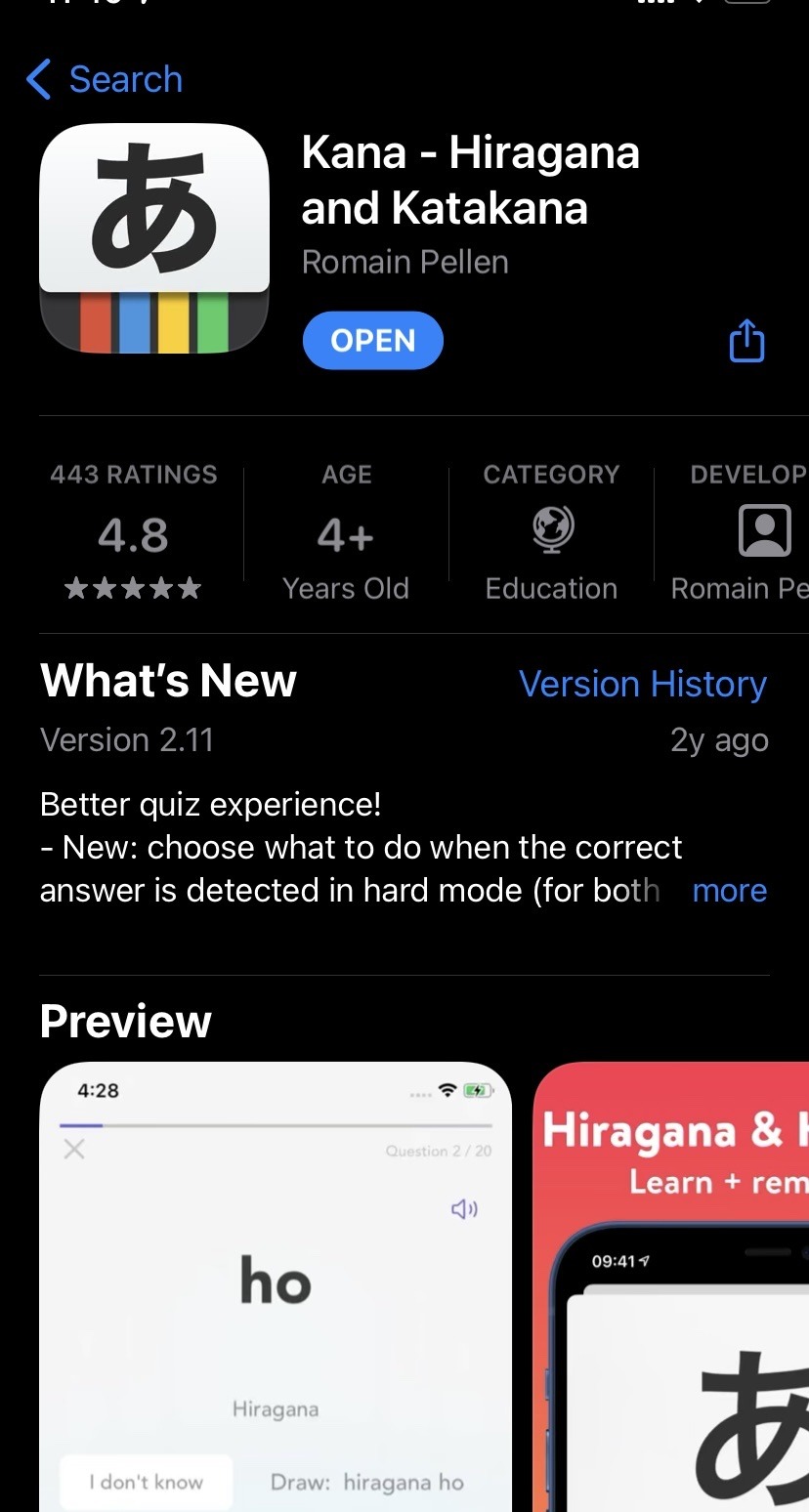

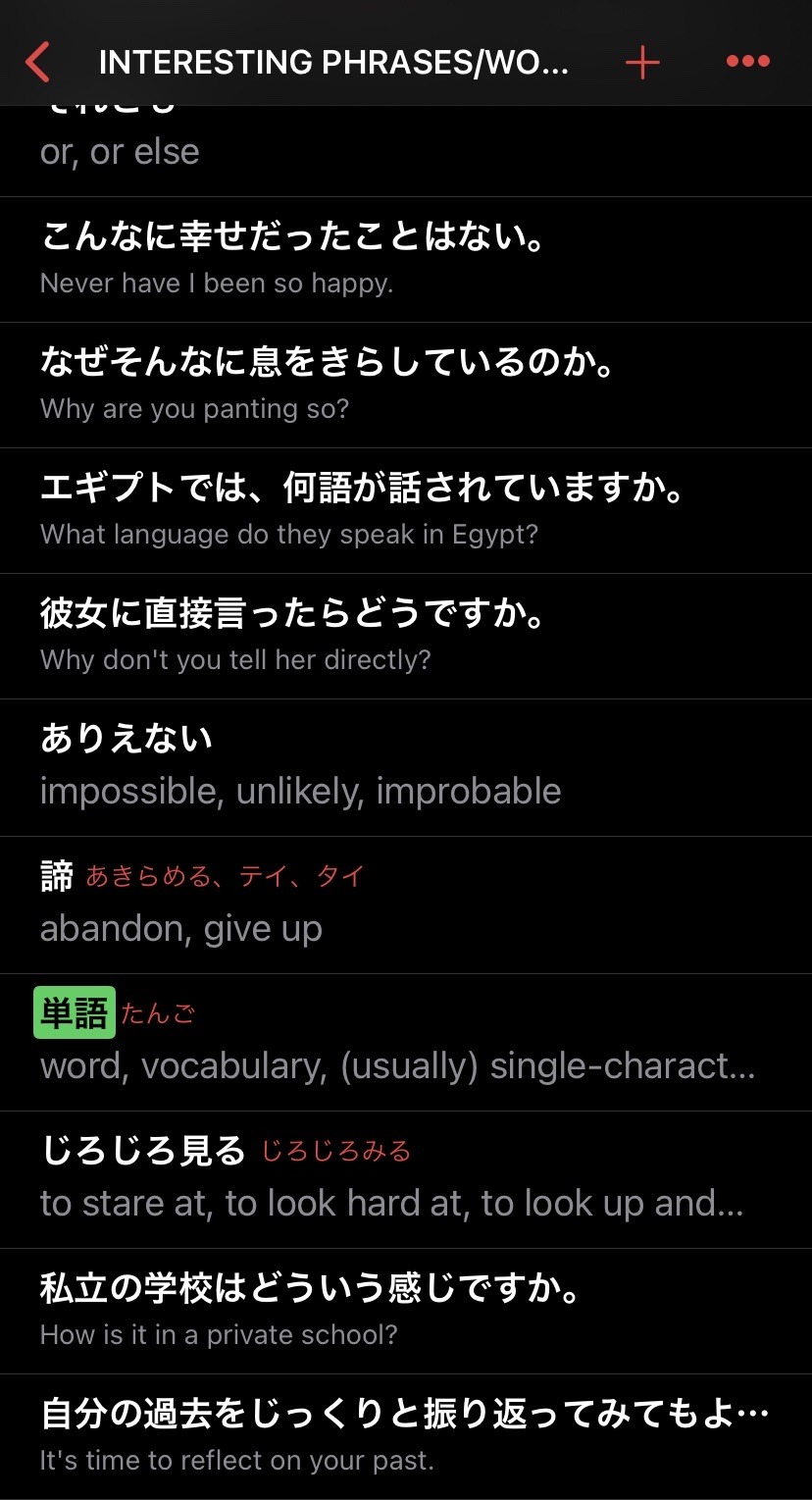
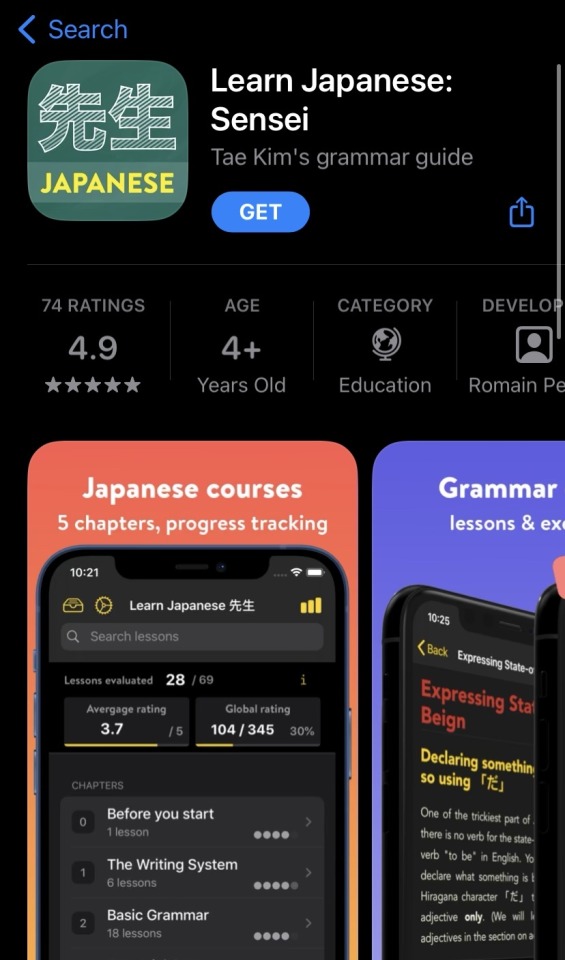

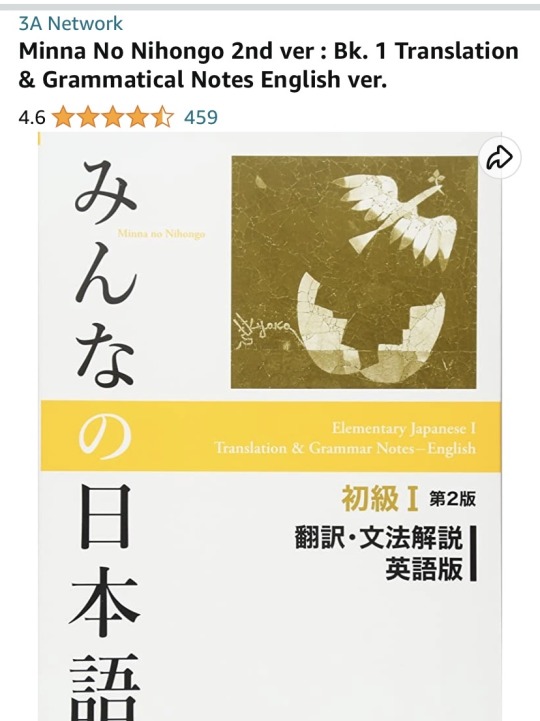
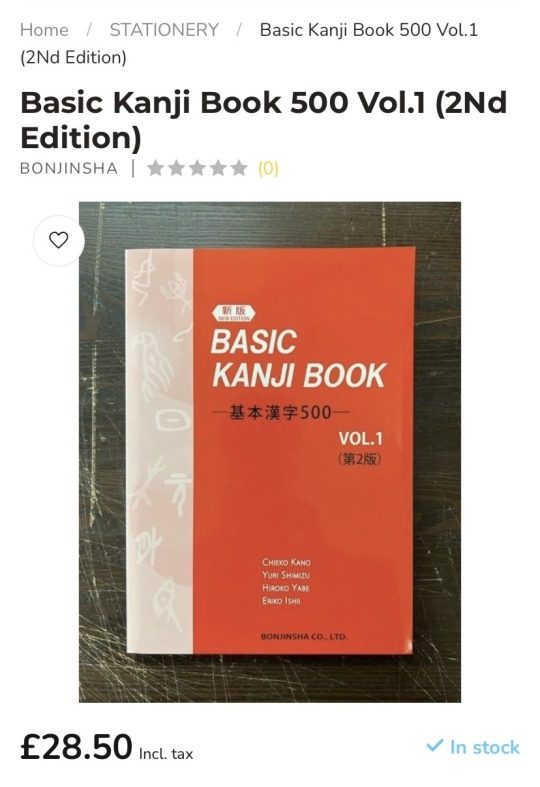

if you’d like to see what my notes looked like in the beginning or anything else please let me know I’d be happy to help! try your best! I’m not sure of your experience of language learning but it’s not always linear and some days you feel you’ve learnt so much and others like you’re set back and there’s a wall, if you feel a wall, take a break, take a few days, a week, your brain is like a sponge and I always feel like it soaks in and then you can continue when you take a break hehe, good luck <3
#anonreply💌#lourdes answers!#lourdes speaks on…!#learning Japanese!#japanese learning#Japanese learning tips
56 notes
·
View notes
Note
hi! can you tell your whole process for learning japanese on your own? where did you start? what resources did you utilise? how did you find and manage your time and maintain discipline? also, how long did it take you to reach fluency?
I am sooooo far from fluent hahaha I'm stumbling through this language Gromit-style

Ok, so, circa 2014 I was studying Norwegian because I really wanted to learn a secondary language (thx American school system...) and I really liked the cadence/feel of Norwegian. That was my entire reason for studying it, I just liked how it sounded lol. But by 2016 I'd learned enough of it from Duolingo that it was time to move on to more difficult study materials.
Which I could not find for the life of me.
I got frustrated and decided it'd probably be best to pick up another language. Japanese was the one I saw the most since a lot of my favorite artists are Japanese, some of my best inking supplies come from Japan (with Japanese packaging), and there used to be a really good local Japanese restaurant too (RIP). Duolingo had just launched an absolutely shit Japanese course that motivated me to look for better practice materials.
I think I started practicing the kana through just writing them a whole bunch before finding out about Tofugu's hiragana and katakana mnemonics-based study articles. From there I did the three free levels offered by Wanikani. Wanikani is awesome, I learned a lot through that program and wish the full version one-time purchase was more affordable... It's worth it, I'm just broke haha
After a while I lost interest in studying Japanese because it's so difficult/time consuming and tried out reconstructed Classical Latin (HARD!), Norwegian again, and just barely dipped my toes into Esperanto. About a year before I got into Guilty Gear (2020), I picked up Japanese again by refreshing my progress on Wanikani. The Duolingo course still sucked but it had gotten a tiny bit better with its kana study tool, though I dropped it again before long. What helped the most this time were books. I tried out these:
Genki - Not bad. I liked how it broke down parts of grammar. However, it's definitely written for a classroom setting. The topics/vocabulary were all school themed and, on top of feeling like I was missing vital information by self-studying, it just got boring.
Tae Kim's Guide to Learning Japanese - This has a physical version but I read it through the free app/website. Much more advanced than Genki, but made for self-study and as a grammatical reference tool. It went a bit over my head and was too fast-paced, I learn kinda slow... Now that I'm much better at Japanese, I should try it again.
Japanese From Zero - My favorite of the books I tried. Goes slower, made more for self-study, and has some free supplemental materials on their website.
While Japanese From Zero was working great, I was losing interest again because my brain CRAVES variety. Straight up translating stories has helped me more than anything else. Japanese Short Stories for Beginners by LingoMastery was a good investment alongside Barron’s Japanese Grammar by Carl and Nobuo Akiyama and Japanese Verbs & Essentials of Grammar by Rita L. Lampkin to help with grammar concepts Japanese Short Stories doesn't expand on enough. IMABI (website) is also a very good grammar reference guide. It can be a bit dry, but I like that. It doesn't waste time and is very direct.
Lingodeer has been invaluable too. The free version is smartphone app only, but that's fine since I usually study right before bed anyway. It has a 5 minute quiz that's just snappy enough to refresh my knowledge without being so long that my brain gets bored of the repetition. The lesson modules also do a really great job at explaining grammatical concepts. There are some other study tools, like specific ones for practicing grammar and vocabulary, that I like.
Then in 2021 I got into Guilty Gear. Boy, did I get into Guilty Gear. Translating GG books has helped me more than all of these other materials combined (except the Tofugu kana articles). HIGHLY recommend going a little crazy for a piece of Japanese media if you wanna learn the language.
I can't speak it for shit though, to be honest lmao. But I set out learning it to read things so that's fine; there are very, very, few Japanese speakers where I live anyway. What I mean by this is that I don't have any materials to suggest for learning how to speak it or to improve listening comprehension, sorry...
If I'm not currently working on a translation project (which counts as studying!!), I try to do at least one of these forms of practice each day:
10-15 minutes of Lingodeer
Do Anki flashcards until I get bored. There's a deck that's all 60 levels of Wanikani, though Wanikani itself is still better.
Practice kana stroke order for the ones I still sometimes struggle with (ツ、シ、ン、ソ......)and at least 5 kanji
Read something in Japanese. Lately this's been Japanese-English Translation: An Advanced Guide by Judy Wakabayashi
There's a page on my Neocities with some study tools but it needs updated with a few things I've since found that work better:
60 notes
·
View notes
Text
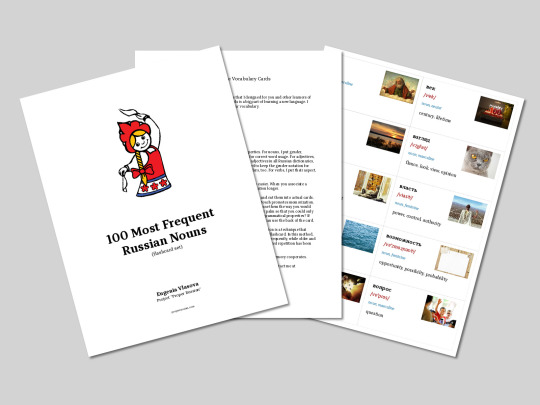
Elevate your Russian language aspirations by focusing on what truly matters! As your dedicated language guide, I've meticulously curated a set of handmade vocabulary cards featuring the most frequently used nouns in Russian.
If mastering Russian is at the pinnacle of your New Year resolutions, kickstart your linguistic journey by immersing yourself in the first 100 high-impact nouns. Each thoughtfully crafted card holds the key to your language progression, offering:
🔍 A Russian word, carefully chosen from the most common lexicon for practical proficiency.
🎙️ Its IPA transcription, ensuring your pronunciation aligns with native fluency.
📘 Grammatical insights into the word, deepening your grasp of its contextual usage.
🌐 An English translation, forming a bridge between languages for comprehensive understanding.
🖼️ A vivid visual aid, capturing the essence of the word to enhance your memory.
Discover firsthand the simplicity and enjoyment my students have experienced, affirming these cards as a delightful and effective memorization tool. Make your Russian studies not only efficient but also enjoyable—immerse yourself in the world of these frequency-based cards today! 🚀✨
16 notes
·
View notes
Text
How to learn French with Miraculous Ladybug
Are you so obsessed with Miraculous that you wish you could watch it in the original (and acc to Astruc, also canon) language? It's actually not as hard as you might think! Even if you've studied French at school for years and still can't understand what's going on without English subs, then this is for you.
I've been heavily inspired by the Refold and Cure Dolly method, this is my spin on it. You can use this method for any language and piece of media, tbh.
First of all you'll need Anki, which is a digital flashcard program, which will let you review vocabulary at regular intervals, to remember them long term. Here is the official manual, and here's a guide that's more catered to language learning.
Step 1: The Basics
You need to have a solid base of French before you can jump into watching native material. If you've studied French to a highschool-ish level, you can probably skip this step.
Here is my guide on how to learn the basics of French enough to immerse properly.
Step 2: Watching the Show
Before you start, I'd recommend watching the show first in French with English subtitles, or just raw French if you're brave enough. I believe it's on Disney+ (If you want another place to watch it from, DM me). You'll need to know the plot of the episode well enough before you start sentence mining.
To get the French text, here is the page of transcriptions. Unfortunately, there's only a limited number avaliable, so you'll only be able to sentence mine from those episodes. From what I've heard, the Disney+ subtitles are pretty inaccurate. The other option might be to use a VPN and set location to France and see if this gives you subtitles that are "French (CC)".
So what is sentence mining?
Above, I've left a link with a brief explanation, but in short, you find a sentence with one unknown word, put the sentence on the front of your Anki card, then put the unknown word on the back. The advantage to making sentence cards instead of just vocab cards is that now you will be reading French sentences everyday, and seeing the words in context, rather than isolated.
I like to dedicate a time to sit down with the transcript and go through the whole episode. Every time I find a word that I don't understand, I look it up in the dictionary. I use WordReference. When you get a little more advanced, I'd switch to definitions from the French dictionary. Then I make a sentence card. Where I can, I add a photo and audio onto the back of the card. If the word seems to be something pretty obscure and you think you don't need it, you don't have to make a card. However, if you see the word more than once, it's probably common enough that you'll need to remember it. Here's an example of one of my sentence cards.
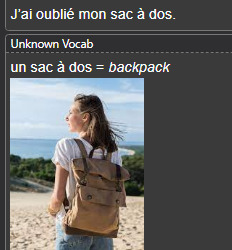
If there's an unknown phrase or idiom, put the whole phrase on the back of the card. Here's an example:

If you just can't find something at all after searching, it could mean there was a typo in the transcript. You can either leave it, or go back to the episode and try to work out what they said. The other option is that it is a word play or pun. You might just have to leave it until you're better at French. Alternatively, you can DM me and I'll do my best to help!
Once I have my sentence cards, I study 10-15 new cards per day, plus all of my reviews. If I fully understand the sentence and the unknown word, I select "Good", and Pass on the cards I don't understand.
But this isn't enough to fully learn French, just to learn new vocab, so there's one more final step.
Step 3: Improving your Listening Comprehension
Each episode you sentence mine will give you a large quantity of vocabulary to learn, especially in the beginning. Whilst I'm learning new vocab, I listen to audio of the show whilst I'm doing tasks that don't require much thinking. These include:
Doing the dishes
Going for a walk
Cleaning and tidying my living space
Cooking
Whilst I play Stardew Valley
Commuting
I make a playlist of all the episodes I have studied and put in on shuffle whilst I do the things listed above. This way, I am listening to French for at least one hour per day, whilst simultaneously revising vocabulary, and getting used to spoken French.
Getting audio of the show is tricky. Currently, I have to download the episode, extract the audio in VLC, and then I cut out unnecessary parts of the audio (theme and end song, transformations, using powers, fight sequences with no speaking) in Audacity. I'm working on a way to share this condensed audio atm!
Now go and learn French!
If you follow this method, you'll be amazed at how quickly you pick up French grammar and vocabulary naturally, with minimal study, and soon you'll be able to watch and episode of Miraculous without subs and understand the majority of it. Bonne chance !
#miraculous lb#mlb#language learning#french language#langblr#miraculous language learning guide#learn french with miraculous ladybug
6 notes
·
View notes
Note
Could u make a routine inspired by kazuha ?
How to live like kazuha ⋆𐙚.ೃ⊹🩰°。𓏲⋆𖦹 🦢₊˚ kazuhaism routine
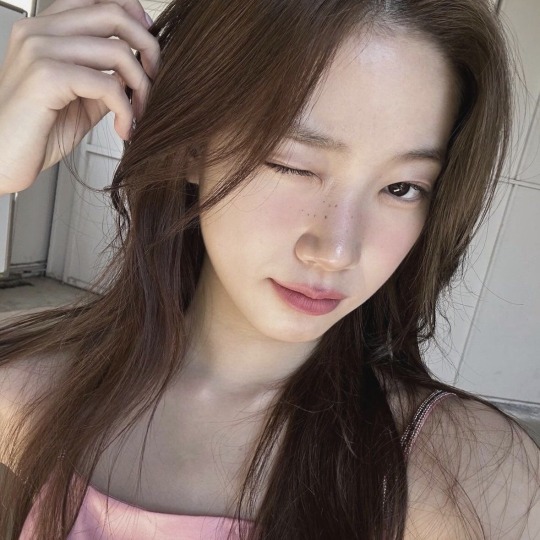
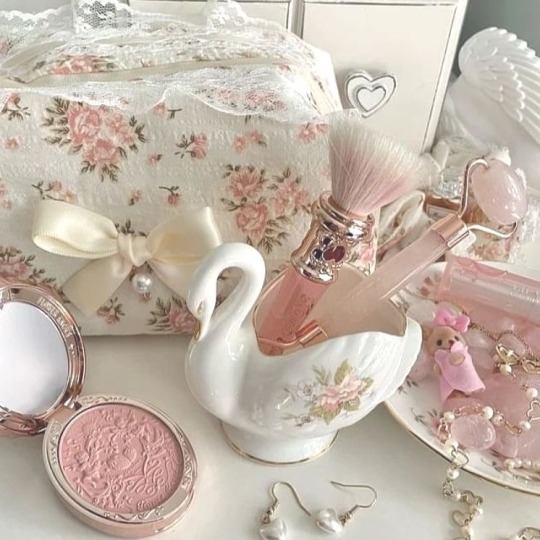

This is a guide on daily routines inspired by le sserafim’s Kazuha! thanks for the request, hope you enjoy it!!
content list (routines):
morning
study
workout
shower + self care
night
(_ _ ) . . z Z⋆ ˚。⋆୨୧˚୨ :★: ୧ ∗ ˖࣪ ໒꒱ ˚₊·
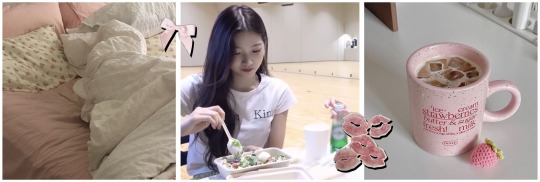
✸ ꒰ morning routine ꒱⋆ ࣪.* ࣪.⋆
🎀 Kazuha starts her days by getting straight out of bed! You can take a few minutes just to think about your dreams or to meditate but after you're done get up without thinking so you avoid lazyness. After, head to the bathroom to do your hygiene routine (washing your teeth, face, body, etc.)
After you do your skincare, it's time for makeup, if i had to describe Zuha’s makeup in a few words i would use ‘natural’ ‘light’ and ‘clean’, even tho she uses as many products as other idols I've already talked about (brow pencil, eyeshadow, base makeup, contour, lashes, eyeliner, blush and lip tint), her makeup still pretty much simple, like just to enhance her natural features.
🧸Time to get dressed, Kazuha usually wears tops or basic t-shirts with baggy sweatpants, the colors she wears the most are white, black and gray. stylize the outfit with a beret or sunglasses!
Finally for breakfast, a good option is to have a sandwich with coffee, however any recipe that includes a lot of veggies in it will be ideal!

✸ ꒰ study routine ꒱⋆ ࣪.* ࣪.⋆
🩰 One of Zuha's favorite things is trying new things and showing progress! So always make sure to experiment with different study styles, techniques and resources. also, remember that progress is not about going from an F to an A, but about improving slowly and enjoying the path to your goals.
To learn and practice her Korean, Kazuha reviews vocabulary daily, using it on small phrases to memorize their meaning. As a visual learner, she also associates words with drawings and writes in her notebook often.
🥥 And to improve her English she usually practices talking with Yunjin. You can ask a friend to tutor you in any signature you feel you are lacking and make learning fun!

✸ ꒰ workout routine ꒱⋆ ࣪.* ࣪.⋆
🪷 Kazuha’s most famous charm is her healthy and beautiful body, as well as her flexibility. She workouts everyday in her dorm room, and has a lot of different workout routines, so I decided to make a schedule so you can try them all!
monday -> le sserafim workout (no jumps / low impact), Kazuha new abs workout and full body stretch.
tuesday -> le sserafim workout (short version), Kazuha upper body workout, stretch
wednesday -> le sserafim workout, Kazuha abs workout, stretch
thursday -> le sserafim workout, upper body workout, stretch
friday -> le sserafim workout, kazuha lower abs workout, stretch
saturday -> le sserafim (short), upper body, stretch
sunday -> le sserafim workout (no jumps / low impact), stretch
🌷 Also, you can try and enroll in a ballet class, it's never too late to try!

✸ ꒰ shower + self care routine ꒱⋆ ࣪.* ࣪.⋆
Before taking your shower, take off your makeup with micellar water or an oil based cleanser. Then bath like you would normally do, but start your shower with lukewarm water and finish with a cold rinse!
🦢 Then use a soft foam cleanser to wash your face, let it air dry, and then use a gentle toner, calming ampoule and cream to set the moisture.
Now for self care, Zuha enjoys spending time doing diamond paintings or other kinds of diys, like decorating phone cases. She also videocalls her friends often in her free time, spending time with friends really helps with our mental health! You can also try and make little handmade gifts for your besties.

✸ ꒰ night routine ꒱⋆ ࣪.* ࣪.⋆
🐩 Dinner time! eat a yogurt bowl with nuts and honey (or any toppings you like) and eat it while watching youtube videos.
After eating she takes her journal and writes about her day and her emotions, she tries to be as concise as possible so no matter if she’s tired or doesn't have time she's still able to reflect on her day!
👛 Then she does her last review on the things she's studying, doing this before going to sleep helps you remember it better.
If she's with the members she will obviously watch a scary movie and have fun with her friends before going to bed!
💋 Finally stretch a little in your bed to be more flexible, have a better posture and to help you to fall asleep faster!
Good night!
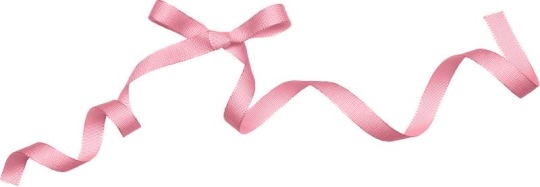
(_ _ ) . . z Z⋆ ˚。⋆୨୧˚୨ :★: ୧ ∗ ˖࣪ ໒꒱ ˚₊·
Heyyy tysm for reading hope you liked it even if it was a little rushed!
I closed my request cus I kept getting them and I really want to focus on the ones that I already have hehe but don't worry I will re-open them once im done!
Also while making this I noticed it was really similar to the how to live like Yunjin I was making sooo idk if I should finish it or not, what do u guys think?
anyways I think that's all
toodlezzzzz!11!!1

#kazuha#nakamura kazuha#le sserafim kazuha#kazuhaism#wonyoungism#kazuha motivation#morning routine#study routine#workout routine#shower routine#self care routine#night routine#le sserafim#aesthetic#coquette#dream girl#it girl#pink blog#that girl#pinterest#pink pilates princess#glow up#beauty tips#girly#pinterest girl#becoming that girl#pink princess#productivity#motivation#inspo
122 notes
·
View notes
Text
Chookily's Guide to complimenting art
Introduction
While it is a kind gesture to extend positive input to an artist I would never want anyone to turn positive input into a job. For the most part it's supposed to be fun!!! We should all learn to try not to take it personally if no one compliments our art every now and then there are various reasons why people may not compliment! They could be occupied, they may not know what to say, or it's simply not their personal taste. Remember for the majority it can be challenging to say something beyond "this looks cool!" and some people may even feel self conscious of what to them seems like a lowsy compliment. What's important is to learn to be confident of our own art. As an independent artist I face this dilemma multiple times and i've learnt how to reassure myself and be confident of my own abilities. Don't rely on others solely for positive reinforcement as you're only setting yourself for failure.
This is also just a general reminder that you don't need to go to into full detail about artwork. Sometimes giving your general support through a reaction or just saying "This looks cool!" is enough and you should never be afraid to voice your support
Why is it important to compliment art?
Other than the rudimentary and obvious reason there is a genuine skill you can train and apply in your own artwork when you compliment artwork. By complimenting artwork you are training yourself to discern and separate specific aspects of a art piece in order to determine the strengths of an artist. THEREFORE you are using critical thinking skills that help with eye training improved vocabulary and a better general grasp of art. (Plus you make the person feel very happy :>>>>)
The Basics
Don't focus on the bigger picture!
When it comes to analyzing artwork the least thing you want to do is focus too much on the grand scheme of the photo. Unless you're complimenting the certain atmosphere setting how convincing it is and other technical artistic merits it's best to focus on smaller things.
Look at the linework look at the color palette or the brushworks or the effects what do you appreciate most about the art piece what do you find most unique and noteable? Once you point these out it can be very easy to give a compliment!
Study technical artwork terms and techniques!
The best way to learn to compliment art is to immerse yourself and absorb information. Learn the basic terminologies and techniques for art do your homework!
Make the criticism personally catered to the artist!
What patterns have you noticed in the artist's work? Try to point out the artist's best abilities and their strengths! Let them know what they are best at!!
Focus on the mood/atmosphere of the artpiece
what emotion does a certain art piece evoke? what does it make you think or feel? Art is a creative exchange of ideas and stories and in doing so you feed that creative energy!
Ask questions about the art piece
Engage yourself with the art piece to familiarize yourself it makes the artist feel special!
Conclusion
This is my basic tutorial on how to compliment art, if you have any other advice feel free to share. Otherwise, thank you for reading!
12 notes
·
View notes
Text
slovak resources 🇸🇰
online courses
e-slovak.sk provides full courses at a1 and a2 level, with interactive exercises and videos, either self-study or tutor-supported (i.e. with a real teacher giving feedback), completely free, with a certificate for completing the final exam.
slovake.eu has courses for introductory level, a1, a2, b1, and b2, as well as a special grammar course. includes lessons, quizzes, exercises, language games, a multimedia library.
loecsen has a set of lessons which guide you through learning a set of vocabulary words, revising them, and then testing your memorisation. it has many levels and topics, but it's not as comprehensive or interactive as e-slovak.
goethe-verlag provides 100 free short lessons with audio. since all the lessons use full sentences, it's good for practicing sentence structure, but you will probably need to use other resources alongside it to learn effectively.
mango languages requires a paid membership (some libraries have memberships; check if yours does!), so i haven't tried it, but it's generally considered a good platform and has a ton of other languages besides slovak too.
interactive flashcards
memrise
clozemaster
digital dialects
badabada
videos and movies
learn slovak with stories is a lovely youtube channel run by a slovak teacher with tons of really charming, slow, learner-oriented content including stories, lessons about slovak culture, discussions of language learning, and so on.
ivysílání as well as this google drive folder by @valerieandherweekofwonderz have lots of classic czechoslovak / czech / slovak films, but be careful, most of them are in czech!
podcasts
learn slovak and more
one minute slovak
comprehensible slovak
slovakforu
music
slovak pop mix
slovak rap mix
slovak rock mix
slovak folk mix
my slovak playlist :)
14 notes
·
View notes
Text
Introduction to Latin: The Basics for Beginners
Introduction
Latin, the ancient language of the Romans, continues to enchant and educate people worldwide. Its influence on languages, literature, and legal systems is undeniable. For beginners eager to embark on the fascinating journey of learning Latin, understanding its grammar, vocabulary, and pronunciation is the first step. This post will guide you through these fundamental aspects, providing a solid foundation for your Latin learning adventure.
Understanding Latin Grammar
Latin grammar may seem daunting at first, but it's quite systematic. One of the language's distinctive features is its use of inflections. Words change their form (inflect) based on their role in a sentence. This is crucial for understanding Latin since word order is more flexible than in English.
Nouns and Cases
Latin nouns are categorized into groups called declensions. Each noun has a gender (masculine, feminine, or neuter) and is declined according to case and number. There are five main cases in Latin - Nominative, Genitive, Dative, Accusative, and Ablative - each serving a different syntactical purpose. For instance, the Nominative case is typically used for the subject of the sentence, while the Accusative is often the direct object.
Verbs and Conjugations
Latin verbs are conjugated to express tense, mood, voice, number, and person. There are four primary conjugations in Latin, and verbs are grouped into these based on the ending of their second principal part (the infinitive). Learning to conjugate verbs is essential for forming sentences and expressing various actions and states of being.
Adjectives and Agreement
Adjectives in Latin must agree with the nouns they describe in gender, number, and case. This agreement is vital for sentence clarity and coherence.
Building Latin Vocabulary
Expanding your Latin vocabulary is a mix of memorization and recognition of patterns. Many Latin words are the ancestors of English terms, especially those in scientific, legal, and literary contexts. Start with common nouns, verbs, and adjectives, and use flashcards or apps to reinforce your learning. Practice by translating simple sentences from English to Latin and vice versa.
Mastering Latin Pronunciation
Classical Latin pronunciation is somewhat different from the Ecclesiastical (Church) Latin used in religious contexts. Here's a brief guide to classical pronunciation:
Vowels are pronounced more distinctly than in English, with 'a' as in "father," 'e' as in "they," 'i' as in "machine," 'o' as in "fort," and 'u' as in "flute."
Consonants are generally pronounced as in English, but 'v' is pronounced as 'w,' and 'c' and 'g' are always hard, as in "cat" and "get."
Diphthongs like 'ae' and 'oe' are pronounced as 'ai' in "aisle" and 'oi' in "oil," respectively.
Conclusion
Embarking on the journey of learning Latin is not just about mastering a language; it's about connecting with centuries of history, literature, and culture. By grasively embracing Latin's grammar, diligently building your vocabulary, and accurately mastering pronunciation, you're setting a strong foundation for your Latin studies. With patience and practice, you'll unlock the rich and rewarding world of Latin texts and traditions. So, take a deep breath, dive in, and let the language of the ancients guide you through a transformative learning experience.
4 notes
·
View notes